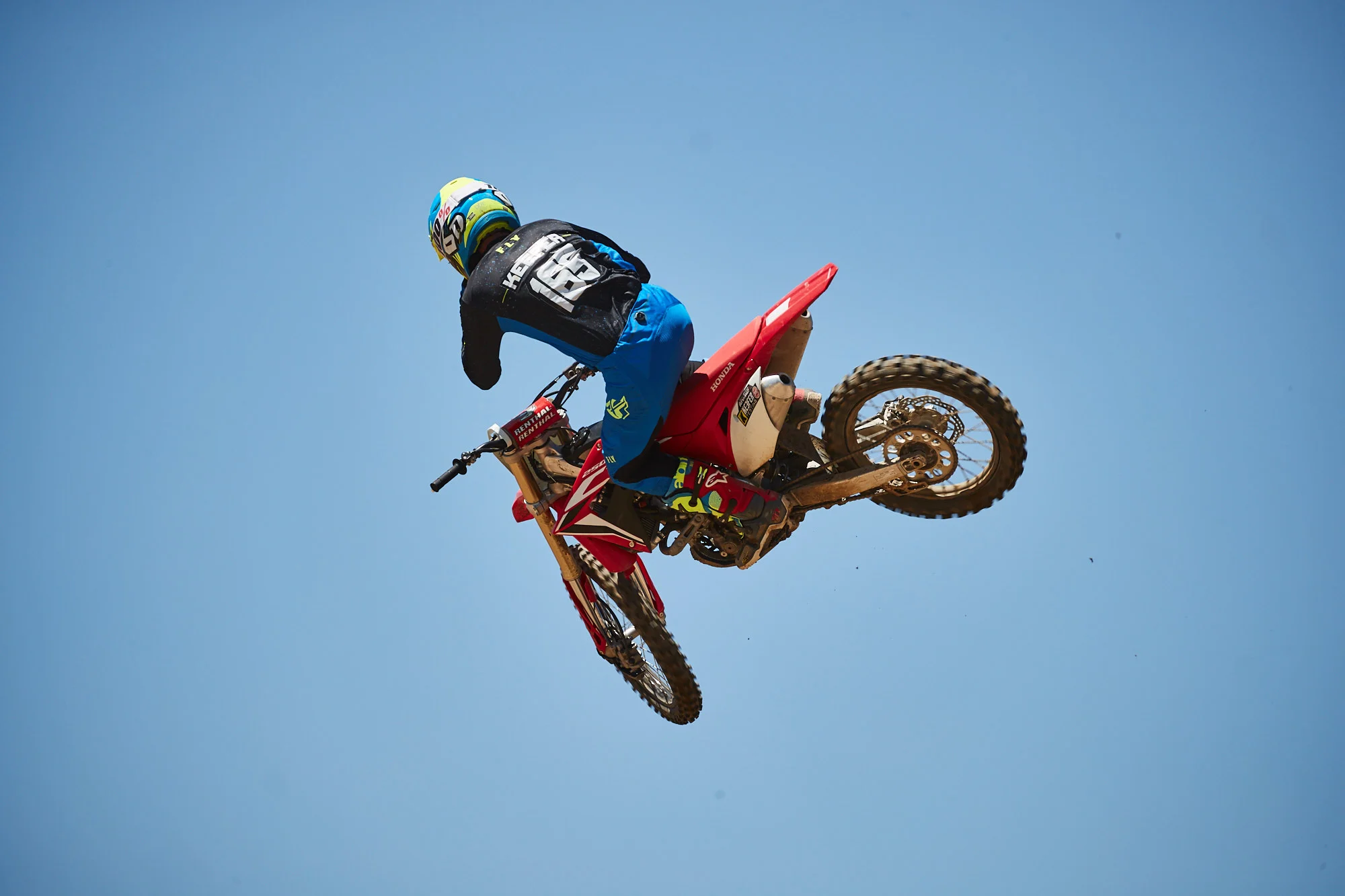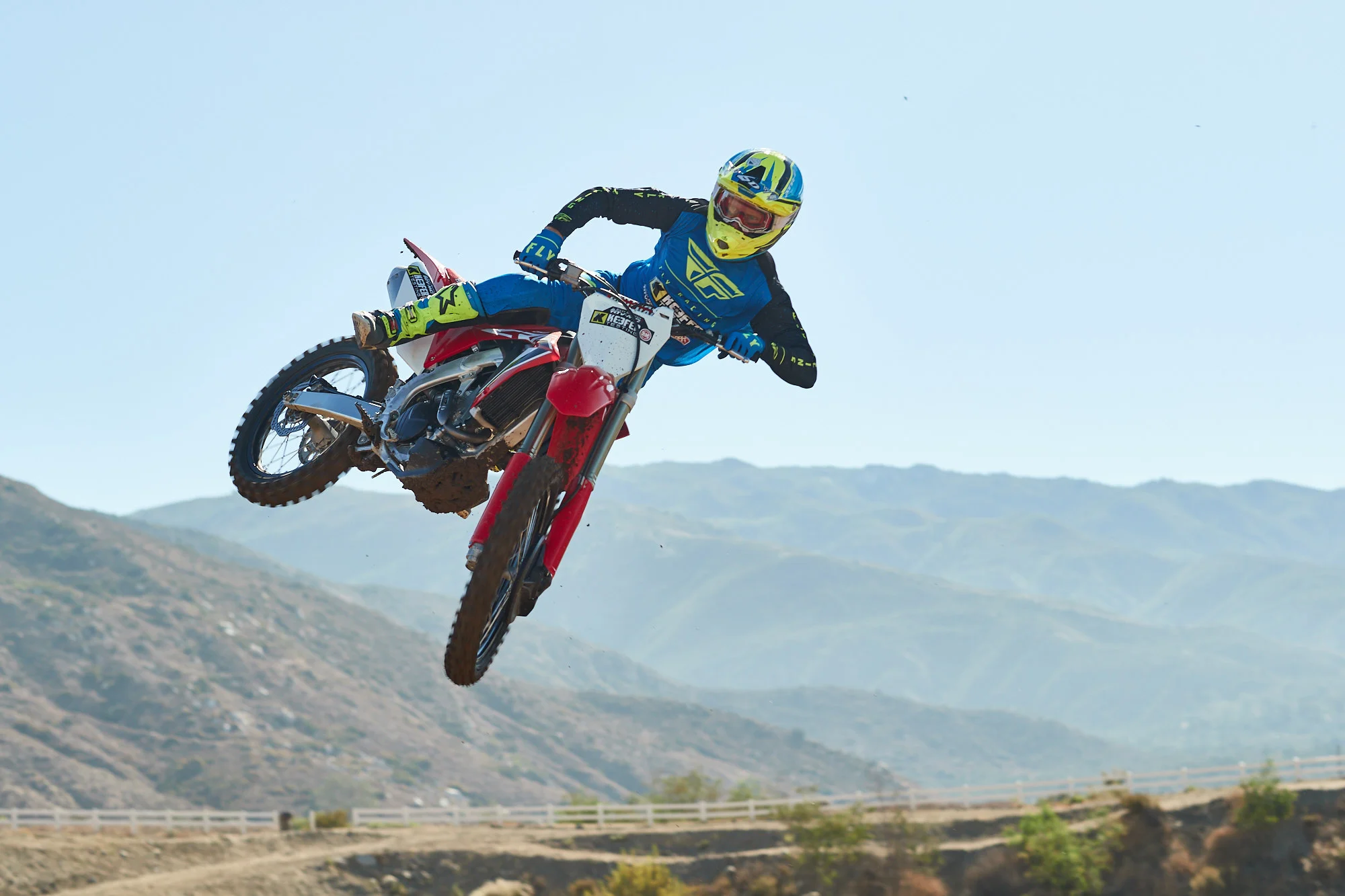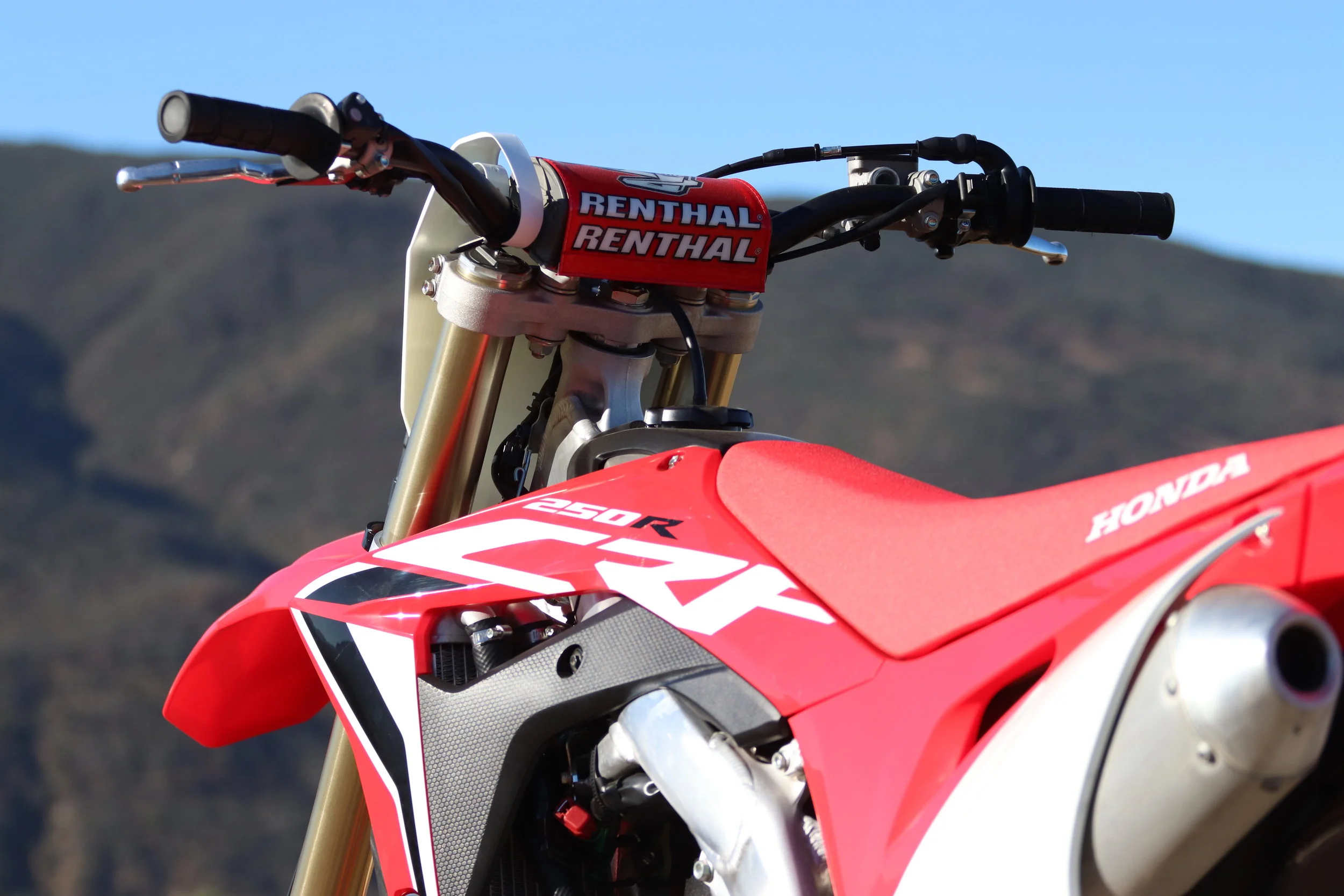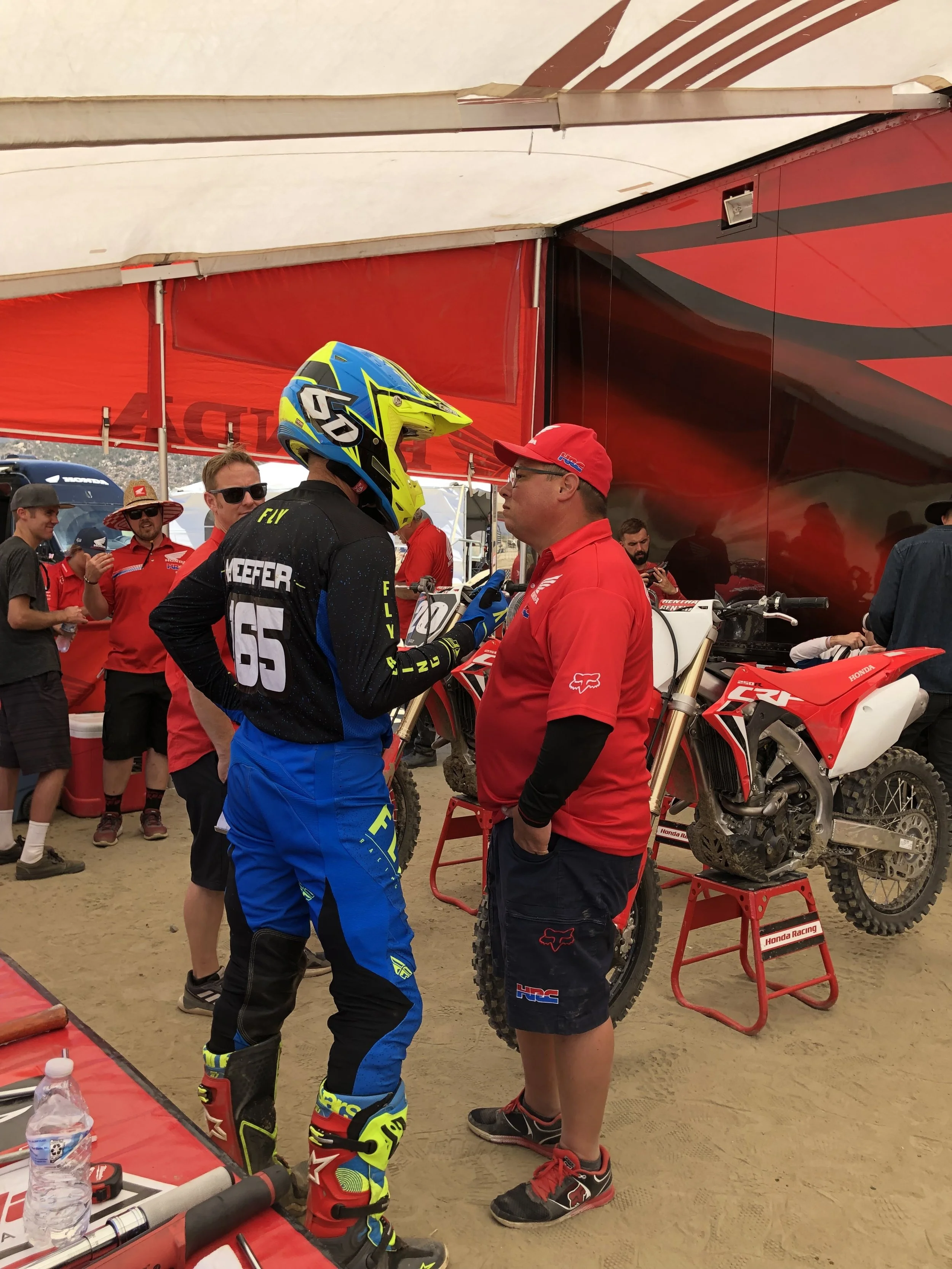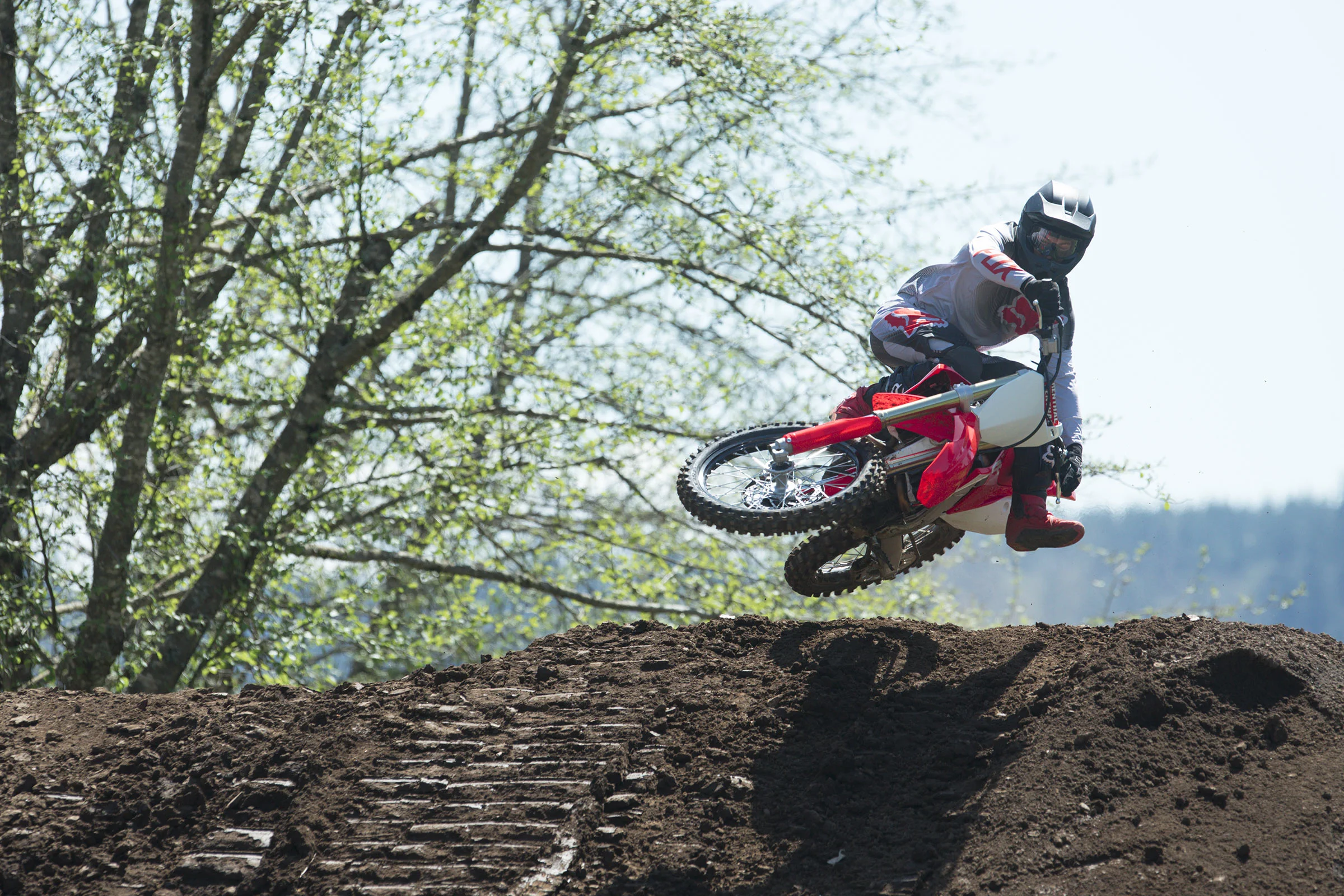I have been testing the 2020 Honda CRF250R at more than a few different tracks trying to get this baseline setting article out to you all. I have finally found a few settings that I think most of you could appreciate as well as benefit from. With Honda being one of only two manufacturers to change their 250’s significantly for 2020, I wanted to make sure all you new 2020 CRF250R owners or future buyers had a great starting point. Here are some settings that will help you enjoy your ride more and tinker with less:
Suspension:
In stock form the Showa suspension on the 2020 Honda CRF250R has decent comfort on de-cel bumps, but lacks a little hold up for riders ranging from 160-190 pounds. If you’re over 190 pounds going up a spring rate on each end is your ticket to a better handling CRF250R. After riding with this setting below at three different tracks, more than one time around, I figured out that this baseline suspension setting gave the 2020 Honda CRF250R the most “track toughness”. If you happen to feel like the fork is harsher (through the mid stroke) with this setting, simply open up the rebound (faster) back to stock setting. This will help free up the fork slightly under front end load (off-gas). The shock needs just a little more hold up under acceleration so simply going stiffer/slower on low speed compression/rebound gives the rider more comfort and added traction out of corners. I tried experimenting with high speed compression, but the Honda is finicky with high speed. Going stiffer on high speed compression (shock) put too much weight on the front end (fork) creating a harsher feeling front fork.
Fork:
Height: 3mm (Stock is 5mm)
Compression: 7-8 clicks out (Stock is 9 clicks out)
Rebound: 10 clicks out (Stock is 11 clicks out)
Shock:
Sag: 100-101mm
High Speed Compression: 2-5/6
Low Speed Compression: 10 clicks out (11 clicks out is stock)
Rebound: 5 clicks out (6 clicks out is stock)
Chassis:
As of right now I prefer the stock engine mounts torqued to the OEM/manual settings. Some bikes react better to aftermarket engine mounts than others and as of right now I feel the best settings (for comfort) come from the stock engine mounts. You can however torque the swingarm pivot bolt to 52 ft.lbs. for increased flex under throttle, while leaning. If you feel like the rear end is planted and doesn't deflect under load on chop please leave it at the OEM/manual torque spec. If you feel like the Honda is standing up through mid corner simply go back up to 5mm on fork height with the above suspension specs to help mid corner lean.
Gearing:
I went back and forth between the stock 13/48 gearing and 13/49, but ultimately decided on sticking with stock. Why? I felt the 13/49 gearing made second gear less usable and didn't help me get into third gear any quicker. The 13/49 robs too much top end away from second and third gears on medium to faster flowy tracks. If you’re riding a tight track and suffer from bad corner technique going to a 13/49 could benefit you more. Decide which tracks you ride the most and what type of rider you are in order to decide which way to go with your gearing.
Steering Head Nut:
Do yourself a favor and tighten up the steering head nut a little on the 2020 Honda CRF250R. The steering comes too loose from the factory and can cause some knifing in corners and can give you slight head shake on de-cel. Simply tightening the steering head nut a little makes the Honda’s front end feel more planted (less loose feeling) when performing corners/initial lean/turning the handlebars. This is a simple modification, but really helps the Honda’s ride attitude around the track. Sometimes it’s the simple/easy things in life that make a difference. Dirt bikes are no different.
ECU Map Switch:
I like map three the best for most tracks around these parts and for more torque out of corners. Even though Honda improved their torque for 2020, it still lacks some pulling power out of corners, compared to the Yamaha. Running the 2020 CRF250R in map three will benefit you the most in this situation. This is my preferred map, but map one is also very usable and can pull pull you farther in second/third gear.
Clutch:
Going to a Rekluse Torque Drive Clutch Pack will give you better clutch lever feel as well as clutch life. The engagement of the lever ratio doesn't change, but it lets you put more of that horsepower to the rear wheel, without slipping, when hard on the throttle in soft dirt. This is simply a clutch pack and not the complete system. You use the stock OEM inner, outer, basket clutch pieces with this kit.
Cooling:
I am not going to sit here and say that Honda fixed ALL of their cooling issues with the radiator change they made for 2020. The Honda CRF250R still runs hot and will puke some radiator coolant out of the overflow when riding in the higher RPM’s during a long moto (20-30 minutes). Just keep an eye on your coolant level if you’re riding in hot an or deep sandy conditions. I had to add a little coolant to the radiator on longer, hotter days here in Southern California. Don’t be lazy and you’ll be fine. I am looking into trying a couple things to help this situation in the future so check back here for more updates on this.
Inexpensive Way To Get Less Rigidity:
Renthal Fatbars come stock on all CRF’s and while we like the strength/bend of the new bar, I still feel like they are stiff on slap down landings/square edge. Going to a Pro Taper EVO handlebar will take away some rigidity as well as give you less vibration to your hands. The 4mm wall thickness of the Pro Taper EVO bar is something I have tested back to back against the Renthal Fatbar. Even if you painted both bars black and sent me on a blind test, I would come back within a lap and tell you which bar was which. It’s that noticeable. If you like the stock bar bend try the Pro Taper EVO SX Race bend as that is the closest bend to the stock 839 Honda Fatbar.
Renthal 839 Fatbar (L) 802 (H) 91 (R) 51 (S) 51 (mm)
Pro Taper SX Race (L) 800 (H) 87 (R) 54 (S) 54 (mm)
If you have any questions about your Honda or anything in this article please feel free to email me and hopefully I can help you out. kris@keeferinctesting.com



